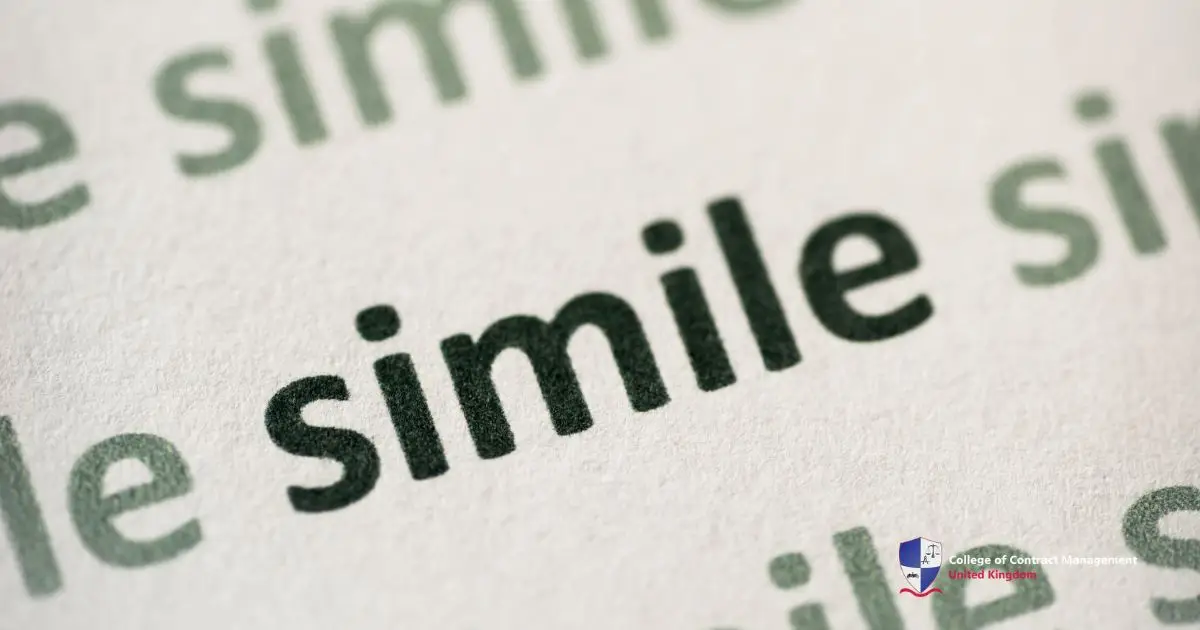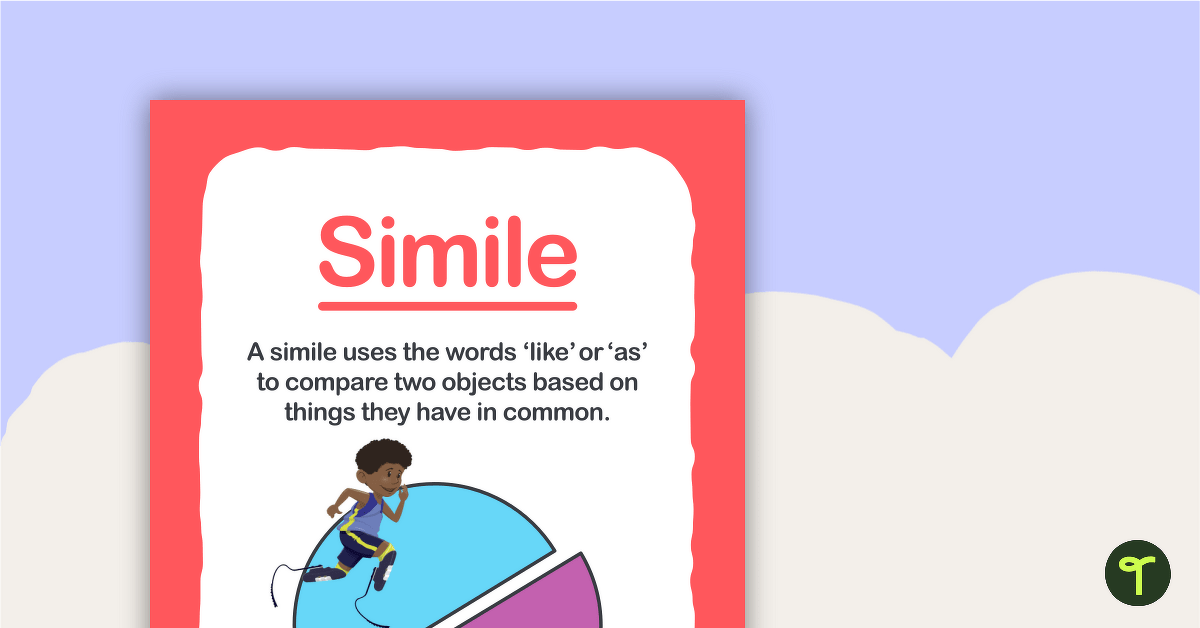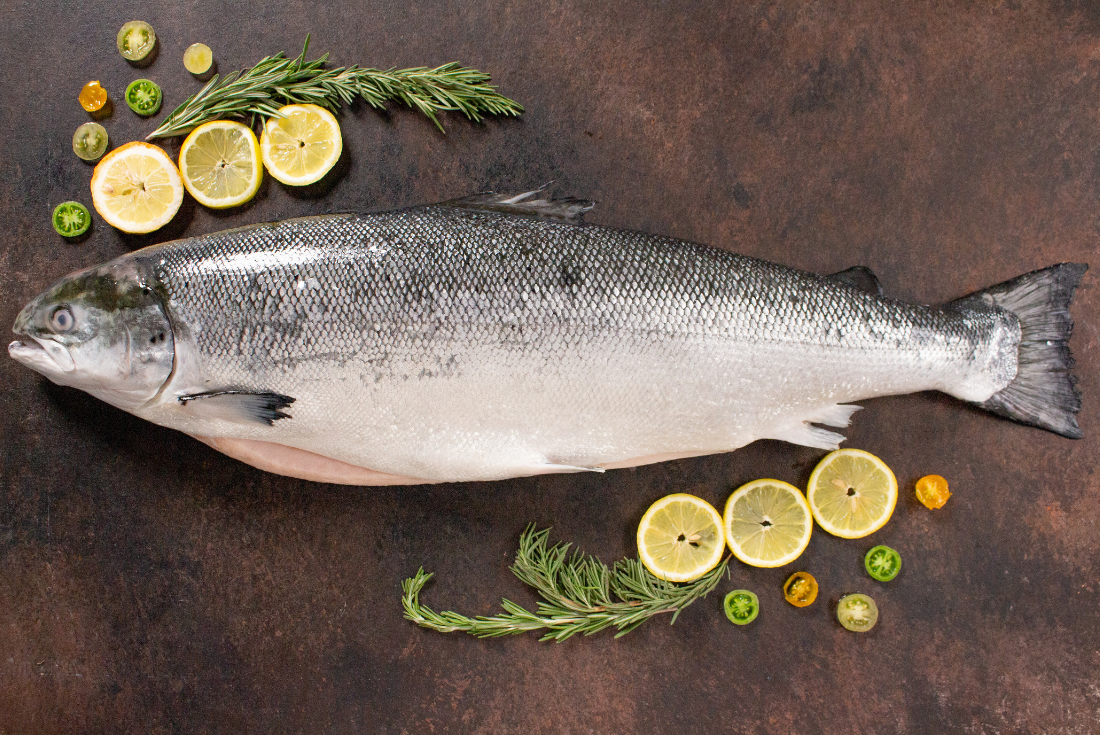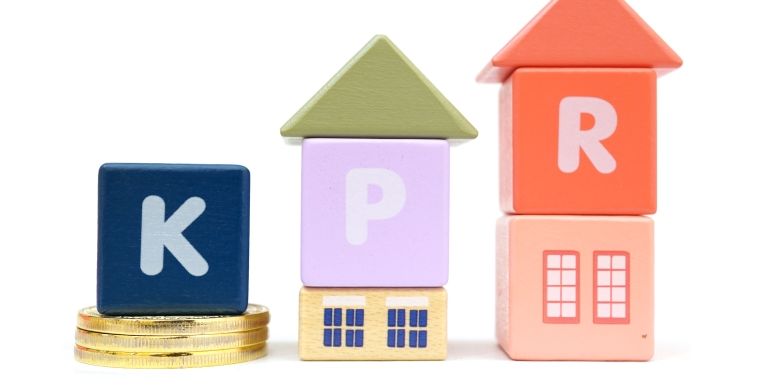
A simile is a powerful literary device that helps writers and speakers bring their ideas to life by making vivid, imaginative comparisons. Using the words “like” or “as,” a simile draws a connection between two different things that share a common quality, helping readers visualize or understand a concept more clearly.
Whether you’re crafting a poem, writing a story, or enhancing your everyday language, similes add color, emotion, and depth to your descriptions. In this article, we’ll explore what similes are, how they differ from metaphors, why they matter in writing, and how to create your own.
🧠 What Is a Simile?

A simile is a figure of speech that compares two unlike things using the words “like” or “as” to highlight a shared trait or effect.
📌 Simile Examples:
-
“Her smile was as bright as the sun.”
-
“He runs like a cheetah on the hunt.”
-
“The room was as silent as a grave.”
These comparisons enrich the sentence by making the meaning more vivid and relatable.
🔄 Simile vs. Metaphor: What’s the Difference?
While both similes and metaphors compare two things, the structure and tone differ:
| Feature | Simile | Metaphor |
|---|---|---|
| Connector | Uses “like” or “as” | Directly states one thing is another |
| Example | “Life is like a box of chocolates.” | “Life is a rollercoaster.” |
| Tone | Often more subtle or gentle | Often more bold or symbolic |
A simile says something is similar to something else. A metaphor knowledge says something is something else.
🎯 Why Use Similes in Writing?
Similes serve several important purposes in communication:
✅ 1. Enhance Imagery
Similes help readers form mental pictures by comparing the unfamiliar to the familiar.
-
“The clouds hung in the sky like cotton balls.”
✅ 2. Add Emotion and Mood
By comparing emotions to physical experiences, similes make feelings more tangible.
-
“She was as nervous as a cat in a room full of rocking chairs.”
✅ 3. Clarify Complex Ideas
Similes can explain abstract concepts by relating them to everyday experiences.
-
“Trying to understand him was like trying to read a book in the dark.”
✅ 4. Create Memorable Phrases
Well-crafted similes make language more engaging and memorable.
✍️ How to Write an Effective Simile
Want to write your own similes? Follow these simple steps:
-
Choose a subject.
What are you describing? (e.g., a feeling, person, place, or action) -
Identify a quality to highlight.
Is it fast, calm, cold, bright, heavy, etc.? -
Find a familiar image or comparison.
Choose something with that same quality. -
Use “like” or “as” to connect them.
Structure your sentence clearly and creatively.
🔧 Example:
-
Subject: The wind
-
Quality: Cold and sharp
-
Simile: “The wind was like a knife slicing through the air.”
💡 Common Types of Similes
Similes can appear in all kinds of writing and speech. Here are a few familiar categories:
🖼️ Visual Similes
-
“Her eyes sparkled like diamonds.”
-
“The moon was as round as a coin.”
🎵 Sound Similes
-
“His voice was like thunder echoing through the hall.”
-
“The silence was as loud as a scream.”
💖 Emotion Similes
-
“She was as happy as a child on Christmas morning.”
-
“He looked as sad as a forgotten toy.”
💪 Action Similes
-
“He fought like a lion protecting its pride.”
-
“She danced as gracefully as a leaf in the wind.”
📚 Famous Similes in Literature
Great writers often use similes to create unforgettable imagery:
-
“My love is like a red, red rose.” – Robert Burns
-
“Life is like riding a bicycle. To keep your balance, you must keep moving.” – Albert Einstein
-
“She was as beautiful as the first light of dawn.” – Various poetic references
📓 Exercise: Create Your Own Simile
Try filling in the blanks:
-
“The sky looked like __________.”
-
“He was as excited as __________.”
-
“The noise was like __________.”
Let your imagination run wild—there’s no limit to how creative your similes can be!
🧾 Conclusion: A Simple Tool with Powerful Impact
Similes are a simple but powerful way to enhance your writing and make your descriptions richer and more relatable. Whether you’re telling a story, writing a poem, or crafting persuasive copy, similes add clarity, creativity, and emotion to your words.
So the next time you want your writing to shine like a star in the night sky, remember the humble simile—it’s your ticket to more vivid and engaging language. 🌟✍️
Discover the art of great food and unforgettable gatherings at Decology – your go-to guide for dining and entertainment – https://decology.com
Related Posts
 Genetika Dasar: Panduan Menarik Mengenal Asal Usul Kita
Genetika Dasar: Panduan Menarik Mengenal Asal Usul Kita
 Salmon Knowledge: The Benefits of Omega-3 Fish for Your Heart and Brain
Salmon Knowledge: The Benefits of Omega-3 Fish for Your Heart and Brain
 Introvert dan Ekstrovert: Menyelami Dua Kepribadian yang Memikat
Introvert dan Ekstrovert: Menyelami Dua Kepribadian yang Memikat
 Skema KPR 2025: Cara Cerdas Punya Rumah Tanpa Ribet
Skema KPR 2025: Cara Cerdas Punya Rumah Tanpa Ribet



